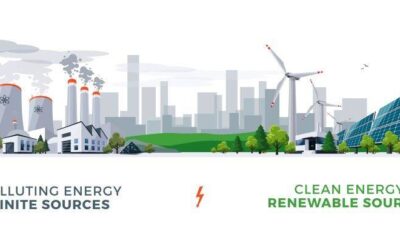

Energy
National Infrastructure Plan: government maps changes to renewable energy subsidies
New strike prices for renewable energy, detailed in the government’s £375 billion infrastructure investment plan for 2013, have been met with mixed reactions from the green industry.
The plan says that the government will sign a deal with Hitachi and Horizon to fund a new nuclear power plant and direct £10m to creating an energy efficient lighting system across UK car parks.
Another potential measure could see private capital being brought into the Green Investment Bank (GIB) to let it trade more freely, as well as incentives to renewable heat.
But the biggest news for renewable energy is the update of strike prices – the static price at which electricity is sold – as part of a wider electricity market reform (EMR) that includes the capacity market and contracts for difference (CfDs).
Energy secretary Ed Davey said, “CfDs will stimulate investment in all forms of low-carbon electricity generation by providing efficient, long-term support. The CfD reduces the risks faced by low-carbon generators, by paying a variable top-up between the market price and a fixed price level, known as the strike price.
“As well as reducing the exposure to volatile and rising fossil fuel prices, the CfD protects consumers by ensuring that generators pay back when the price of electricity goes above the strike price.”
Davey added that the reform will help the UK to achieve its 30% target for renewable electricity production by 2020 and will unlock £40 billion of investment in low-carbon projects.
While prices for onshore wind power and solar will be cut from 2015, offshore wind’s price will be increased.
Nina Skorupska, chief executive of the trade body the Renewable Energy Association (REA), said this was a reflection on the clean technologies’ increasing cost-competitiveness with fossil fuels.
“The big picture here is that renewables are the only low-carbon technologies which can help bridge the looming supply crunch – and yet government has actually depressed its ambition for biomass and conventional waste to energy generation. This means more coal and gas plants, keeping us very much hooked on volatile fossil fuel prices”, she added.
“The real test for EMR is in the policy design – not just the headline support levels. There is more work to be done to ensure that EMR works for independent generators as well as the big utilities. Independent generators help drive competition and innovation, and can also help communities invest in their own local energy projects.”
Maf Smith, deputy chief executive of the wind and marine trade body RenewableUK, said a reduction in onshore wind subsidies was “unwelcome” given the technology was the “most cost-effective” source of clean power.
He went on to say that the cut could heavily impact smaller, community-led onshore wind projects, adding, “If this cut has been made for political reasons rather than economic ones that would be a worry. All politicians need to understand that uncertainty spooks investors and it is the consumer who bears that cost. Voters support the development of on and offshore wind, so we now need a period of calm and consistency from government.”
Meanwhile, Ian Temperton, head of advisory at asset management firm Climate Change Capital, said, “It is very good news that the most mature renewable energy technologies of onshore wind and solar PV continue to get cheaper for consumers and more competitive compared to conventional forms of power generation.
“In a difficult political climate the vote of confidence given by the offshore wind package is very welcome, and it remains incumbent on the industry to repay that faith by driving down its costs over time.”
Further reading:
Government accused of putting ‘sticking plasters’ on energy bills
Energy bills to be cut by £50 after government shake-up
Politicians urged to focus on energy efficiency measures
British energy consumers deserve more than political football


 Environment10 months ago
Environment10 months agoAre Polymer Banknotes: an Eco-Friendly Trend or a Groundswell?

 Environment11 months ago
Environment11 months agoEco-Friendly Home Improvements: Top 7 Upgrades for 2025

 Features9 months ago
Features9 months agoEco-Friendly Cryptocurrencies: Sustainable Investment Choices

 Features10 months ago
Features10 months agoEco-Friendly Crypto Traders Must Find the Right Exchange




























